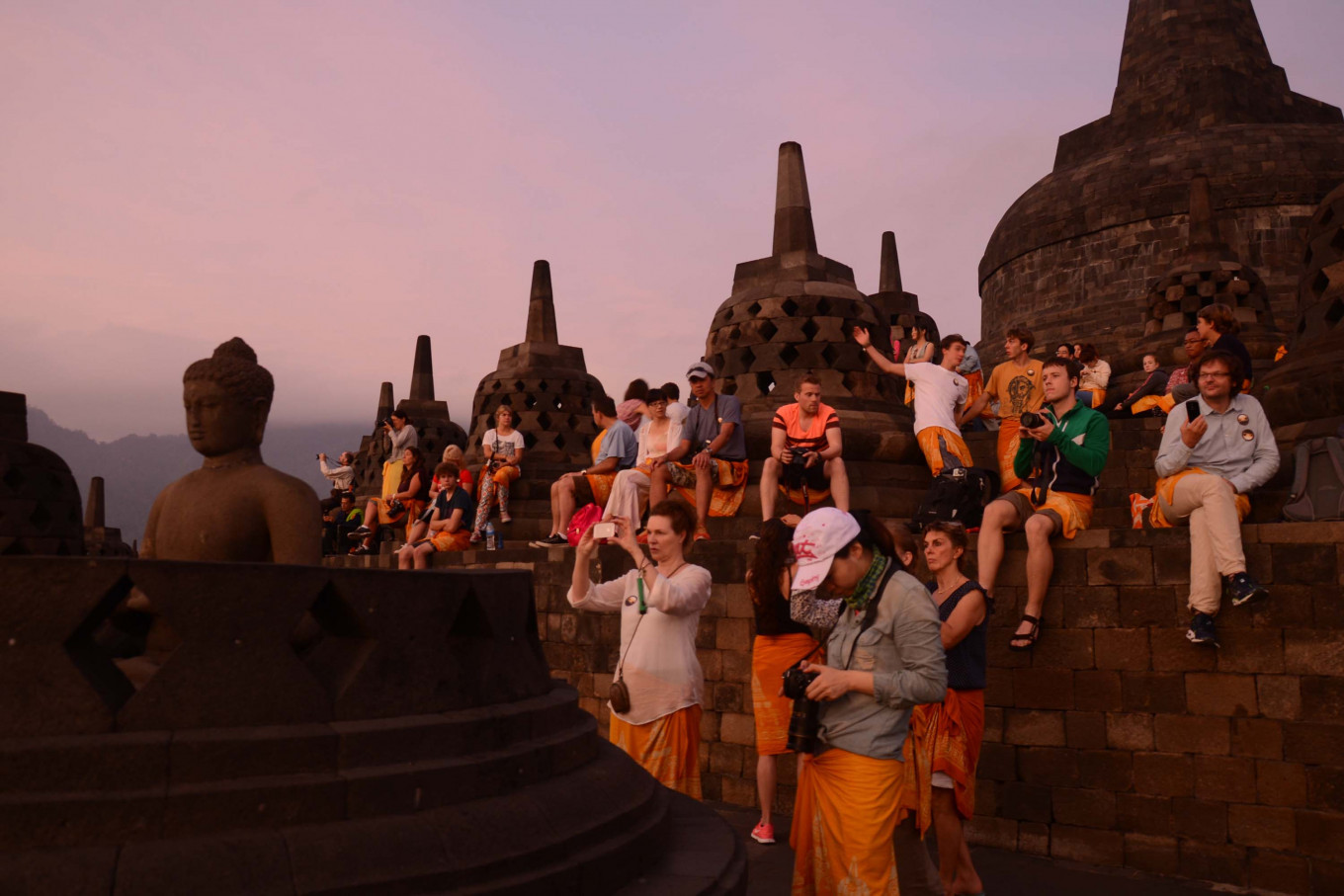Popular Reads
Top Results
Can't find what you're looking for?
View all search resultsPopular Reads
Top Results
Can't find what you're looking for?
View all search resultsGovt to hike Borobudur ticket prices, limit visitors
“We are doing this to preserve the history and cultural heritage of the archipelago,” minister Luhut Panjaitan said on Sunday.
Change text size
Gift Premium Articles
to Anyone
T
he government is planning to increase the ticket price for access to Borobudur, the world’s largest Buddhist temple, located in Magelang, Central Java, and to limit the number of visitors who will be admitted.
Coordinating Maritime Affairs and Investment Minister Luhut Panjaitan said on Sunday that the government planned to charge local tourists Rp 750,000 (US$51.92) if they wanted to climb to the top of the temple and foreign tourists $100. Tickets for students would remain Rp 5,000.
Those who wished to enter the complex without climbing the temple would be charged the previous price of Rp 50,000.
Luhut added that the number of visitors would be limited to 1,200 per day to preserve the structure.
“We are doing this to preserve the history and cultural heritage of the archipelago,” Luhut said in a statement.
During the pandemic, the number of visitors to the archeological site has been limited to 4,000 per day.
In 2019, the tourist attraction recorded some 5 million visitors – more than 13,000 visitors per day on average.
Luhut added that all tourists would be accompanied by local tour guides to build a “sense of belonging” and employ local residents.
The plan is expected to be reviewed by President Joko “Jokowi” Widodo next week.
Preservation measures
Experts welcomed the government's move to restrict the number of visitors who would be stepping on the stone structure of the UNESCO World Heritage Site to prevent further damage to the structure, which has been weathered and vandalized.
Borobudur conservation head Wiwit Kasiyati said the restriction would shift the temple from a mass tourism site to a “meaningful tourism” site.
She said visitors climbing the temple would be required to wear special sandals to prevent damage to its staircases and structures.
Witit declined to comment on the proposed ticket prices.
"The ticket pricing is under the jurisdiction of the Borobudur Temple Tourism Park at the State-Owned Enterprises Ministry. But in the future, we want the number of visitors climbing the temple structure to be limited in order to preserve the temple,” Wiwit said on Monday, adding that the new policy would not affect Buddhist prayer at the temple.
University of Indonesia archeology professor Agus Aris Munandar said the number of visitors should have been restricted long ago, considering the temple's age and visitors’ general lack of preservation awareness.
He said tourists should only be allowed to enter the temple courtyard and should be barred from climbing the structure, as the 8th century stonework was fragile.
"If the stones are damaged, they cannot be restored," Agus said. "Tourists are not completely prohibited but limited by regulations.”
Indonesian Archeologist Association chairman Marsis Sutopo also welcomed the plan, saying that the interests of tourism had to be balanced against the need to conserve the piece of world heritage.
"Tourism should be focused on quality by considering heritage preservation and environmental sustainability," he said.
He suggested restricting visitors by capacity only and offering a lower ticket price so that less well-off tourists could experience the site.
UNESCO considers Borobudur one of the greatest Buddhist monuments in the world. It was built in the 8th and 9th centuries during the Syailendra dynasty.
The main temple is a stupa built in three tiers around a hill. The structure consists of a pyramidal base with five concentric square terraces, the base a cone with three circular platforms and, at the top, a monumental stupa.
On its circular platforms, the temple hosts 72 openwork stupas, each containing a statue of the Buddha.










